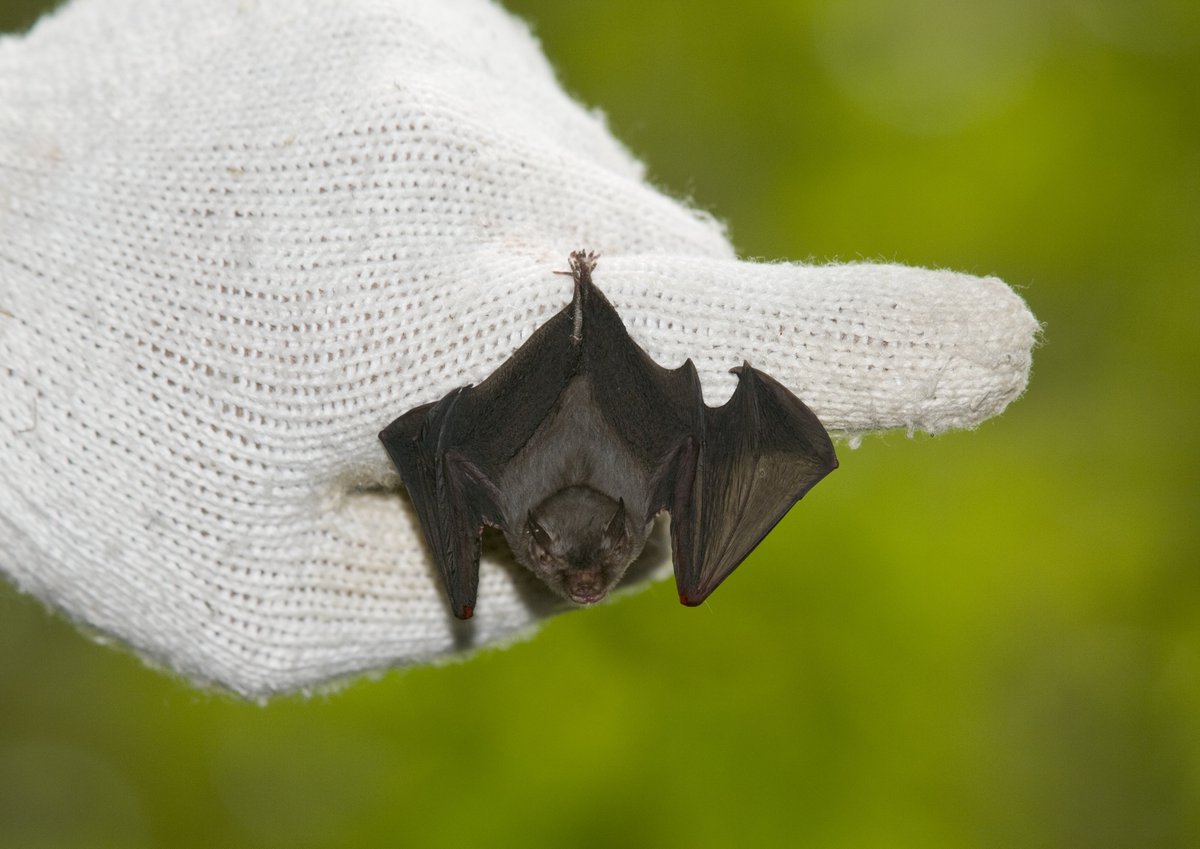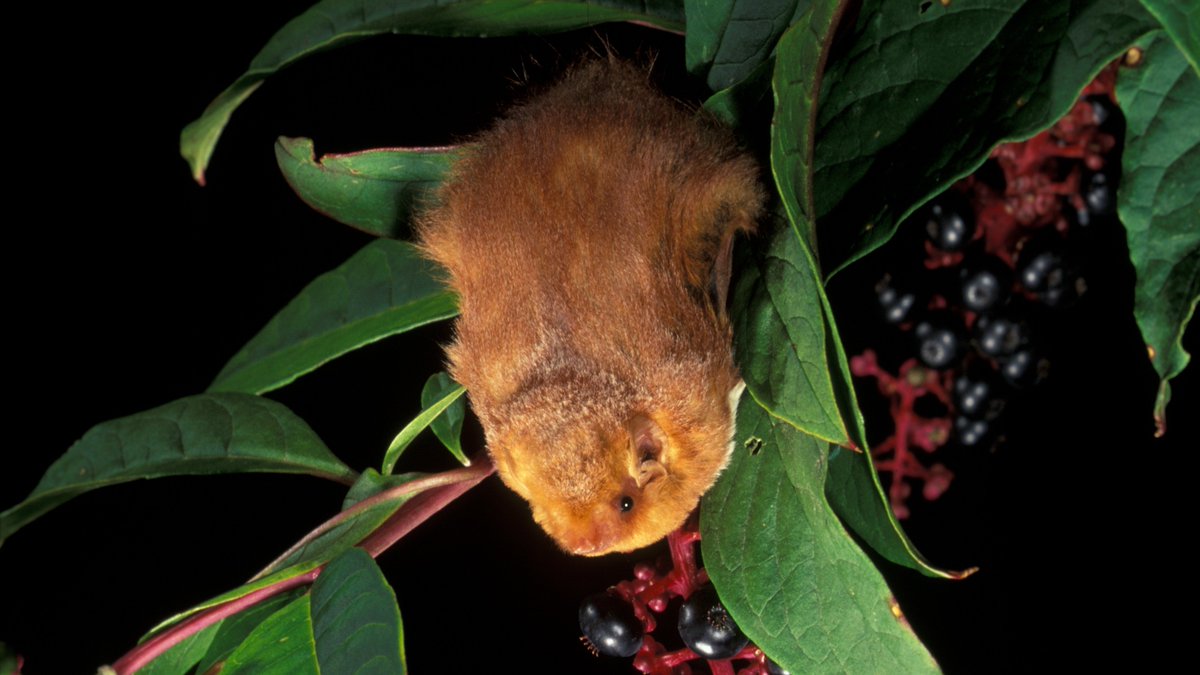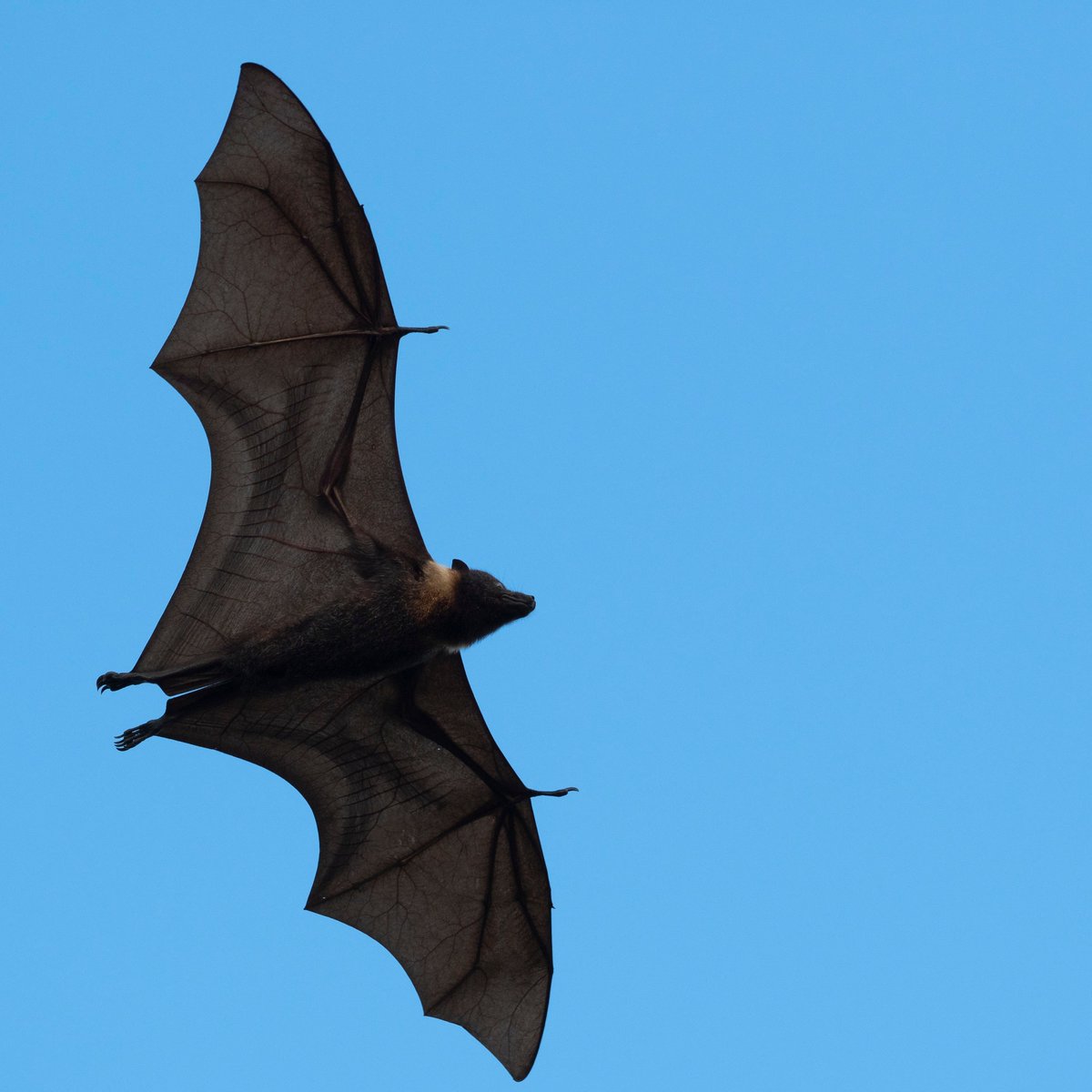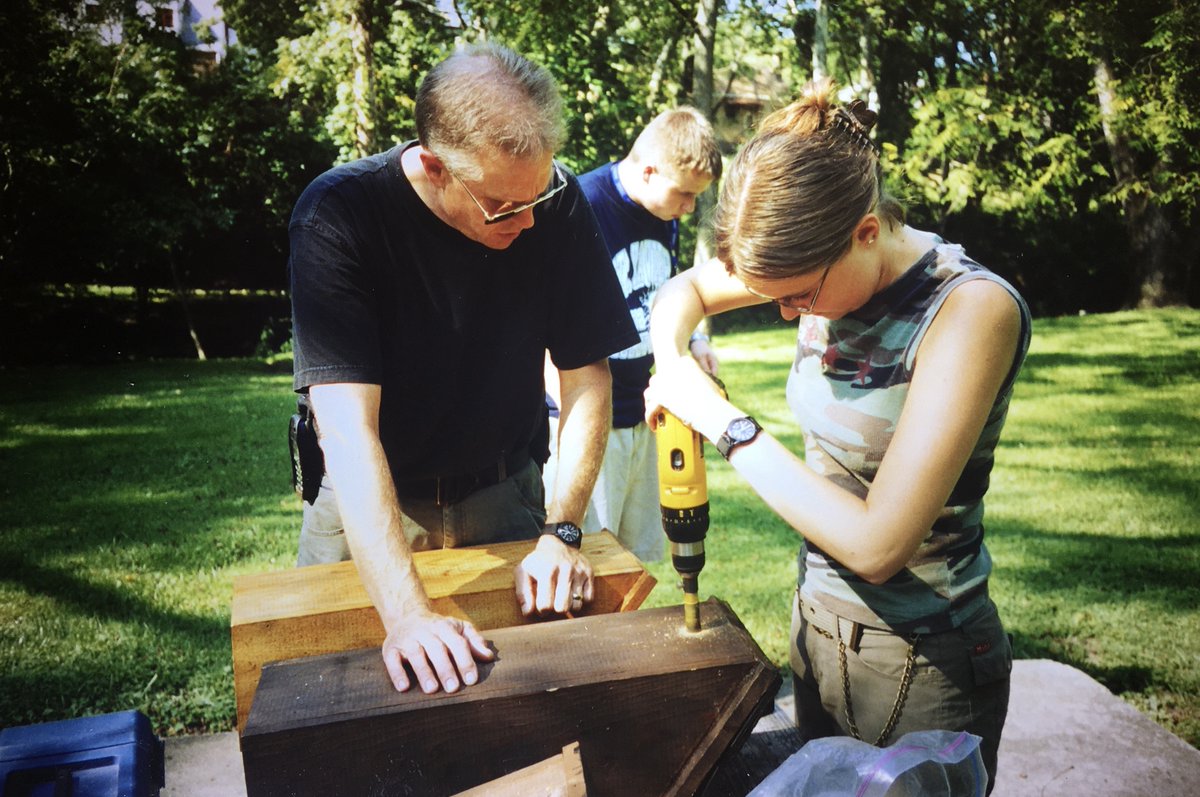
[Tweet by @BatsForLife]
Today I'd like to start by talking about a topic that has received more attention recently: bats & diseases.
[A thread]
Today I'd like to start by talking about a topic that has received more attention recently: bats & diseases.
[A thread]
[Tweet by @BatsForLife]
Do bats carry more viruses than other animals? A recent study suggests there are many viruses hosted by bats simply b/c there are many species of bats, not because they are more inherently dangerous to humans than other mammals.
pnas.org/content/117/17…
Do bats carry more viruses than other animals? A recent study suggests there are many viruses hosted by bats simply b/c there are many species of bats, not because they are more inherently dangerous to humans than other mammals.
pnas.org/content/117/17…
[Tweet by @BatsForLife]
#Bats are AMAZINGLY adept at not getting sick from viruses. Unlike us, bats have mechanisms that reduce viral replication & dampen immune response to viruses. The result: their immune systems control viruses but they don't get sick.
sciencedaily.com/releases/2020/…
#Bats are AMAZINGLY adept at not getting sick from viruses. Unlike us, bats have mechanisms that reduce viral replication & dampen immune response to viruses. The result: their immune systems control viruses but they don't get sick.
sciencedaily.com/releases/2020/…
[Tweet by @BatsForLife]
Immune reactions in #bats may be dampened as a trade-off for flight. Flight requires exertion & creates unstable molecules. It's better for the bat to ignore viruses than suffer autoimmune symptoms from flying.
nytimes.com/2020/12/11/opi…
@DavidQuammen
Immune reactions in #bats may be dampened as a trade-off for flight. Flight requires exertion & creates unstable molecules. It's better for the bat to ignore viruses than suffer autoimmune symptoms from flying.
nytimes.com/2020/12/11/opi…
@DavidQuammen
[Tweet by @BatsForLife]
Studying bats' immune systems can provide new treatments to fight human diseases! E.g. #bats have mutated/eliminated several genes involved in inflammation; scientists can develop drugs to inhibit these genes in us to treat disease.
cell.com/cell-metabolis…
Studying bats' immune systems can provide new treatments to fight human diseases! E.g. #bats have mutated/eliminated several genes involved in inflammation; scientists can develop drugs to inhibit these genes in us to treat disease.
cell.com/cell-metabolis…
[Tweet by @BatsForLife]
So what about #COVID19 and the SARS-CoV-2 virus? Check out this insightful video by @BatConIntl Chief Scientist @FrickWinifred
vimeo.com/441883279
So what about #COVID19 and the SARS-CoV-2 virus? Check out this insightful video by @BatConIntl Chief Scientist @FrickWinifred
vimeo.com/441883279
[Tweet by @BatsForLife]
In a nutshell: A virus hosted by one bat species, the Intermediate horsehshoe bat (Rhinolophus affinis), seems to be a distant relative of SARS-CoV-2. We don't know exactly how the spillover event happened from an animal to a person, or what animal it was.
In a nutshell: A virus hosted by one bat species, the Intermediate horsehshoe bat (Rhinolophus affinis), seems to be a distant relative of SARS-CoV-2. We don't know exactly how the spillover event happened from an animal to a person, or what animal it was.
[Tweet by @BatsForLife]
The crux of the matter is: Research shows that disturbing animal habitats is usually what causes the transfer of a zoonotic disease to humans. Bats do not seek out contact with people. It's our own actions that put us at risk.
nytimes.com/2012/07/15/sun…
The crux of the matter is: Research shows that disturbing animal habitats is usually what causes the transfer of a zoonotic disease to humans. Bats do not seek out contact with people. It's our own actions that put us at risk.
nytimes.com/2012/07/15/sun…
[Tweet by @BatsForLife]
Merely being in the vicinity of bats is not cause for panic. When spillovers occur there's almost always a strong human reason. This includes hunting & trading wildlife in markets where people come into close contact with animals, increasing spillover risk
Merely being in the vicinity of bats is not cause for panic. When spillovers occur there's almost always a strong human reason. This includes hunting & trading wildlife in markets where people come into close contact with animals, increasing spillover risk
[Tweet by @BatsForLife]
Unfortunately, misinformation & fear have led to culling bats in some areas, which can be counterproductive.
Reducing vampire bat colonies in Peru actually resulted in higher rabies transmission in remaining bats
royalsocietypublishing.org/doi/full/10.10…
@DanielStreicker
Unfortunately, misinformation & fear have led to culling bats in some areas, which can be counterproductive.
Reducing vampire bat colonies in Peru actually resulted in higher rabies transmission in remaining bats
royalsocietypublishing.org/doi/full/10.10…
@DanielStreicker
[Tweet by @BatsForLife]
In addition, habitat loss & culling may increase stress in bats, increasing viral shedding from infected individuals. Kind of like how when we're stressed cold sores can reappear. Increased stress can increase the risk of spillover.
royalsocietypublishing.org/doi/pdf/10.109…
In addition, habitat loss & culling may increase stress in bats, increasing viral shedding from infected individuals. Kind of like how when we're stressed cold sores can reappear. Increased stress can increase the risk of spillover.
royalsocietypublishing.org/doi/pdf/10.109…
[Tweet by @BatsForLife]
And of course, as we saw yesterday bats provide IMMENSE benefits to the environment and to us. Check out the unrolled thread "Benefits of Bats" here: threadreaderapp.com/thread/1344039…
Getting rid of bats is NOT the way to go. So what SHOULD we do?
And of course, as we saw yesterday bats provide IMMENSE benefits to the environment and to us. Check out the unrolled thread "Benefits of Bats" here: threadreaderapp.com/thread/1344039…
Getting rid of bats is NOT the way to go. So what SHOULD we do?
[Tweet by @BatsForLife]
Some solutions?
1) Reduce human-wildlife contact as much as possible & PROTECT NATURAL HABITAT
2) Use safety procedures & proper protective equipment (e.g. gloves) when in direct contact w/ wildlife
3) Prevent disease spread within wild animal populations
Some solutions?
1) Reduce human-wildlife contact as much as possible & PROTECT NATURAL HABITAT
2) Use safety procedures & proper protective equipment (e.g. gloves) when in direct contact w/ wildlife
3) Prevent disease spread within wild animal populations
[Tweet by @BatsForLife]
Solution #1: Reducing encroachment into wildlife habitat, protecting remaining habitat, and combating illegal wildlife trade are KEY to preventing the next pandemic. These will not happen overnight, but are vital.
americanprogress.org/issues/green/r…
@amprog #COVID19
Solution #1: Reducing encroachment into wildlife habitat, protecting remaining habitat, and combating illegal wildlife trade are KEY to preventing the next pandemic. These will not happen overnight, but are vital.
americanprogress.org/issues/green/r…
@amprog #COVID19
[Tweet by @BatsForLife]
Solution #2: If we do get in direct contact w/ wildlife, it's important to take proper precautions. This applies around the world. E.g. deer in the US can pass tuberculosis to people, & wearing gloves while field dressing the animal can help prevent this.
Solution #2: If we do get in direct contact w/ wildlife, it's important to take proper precautions. This applies around the world. E.g. deer in the US can pass tuberculosis to people, & wearing gloves while field dressing the animal can help prevent this.
[Tweet by @BatsForLife]
Solution #3: Scientists like @DanielStreicker are investigating potential vaccines that can be deployed in wild bat populations to prevent disease spread among bats themselves. We already have edible rabies vaccines for vampire bats
tedmed.com/talks/show?id=…
Solution #3: Scientists like @DanielStreicker are investigating potential vaccines that can be deployed in wild bat populations to prevent disease spread among bats themselves. We already have edible rabies vaccines for vampire bats
tedmed.com/talks/show?id=…
[Tweet by @BatsForLife]
These solutions will not happen overnight. They will require interdisciplinary teams (disease experts, conservationists, social scientists, communications experts, health officials, the list goes on), AND support from governments & the general public
These solutions will not happen overnight. They will require interdisciplinary teams (disease experts, conservationists, social scientists, communications experts, health officials, the list goes on), AND support from governments & the general public
[Tweet by @BatsForLife]
In summary: #COVID19 & other outbreaks are not the fault of bats. Bats are wild animals just like any other wild animal that we need to respect & protect. Part of the answer lies in changing our own behaviors & the ways we interact with the natural world
In summary: #COVID19 & other outbreaks are not the fault of bats. Bats are wild animals just like any other wild animal that we need to respect & protect. Part of the answer lies in changing our own behaviors & the ways we interact with the natural world
[Tweet by @BatsForLife]
To learn more about bats & diseases, and the benefits of bats, check out these groups & resources:
@GlobalBatNet
gbatnet.blogspot.com
@BatConIntl
batcon.org/bats-covid-19-…
@_BCT_
bats.org.uk/about-bats/bat…
@bats_w_borders
batswithoutborders.org/bats-and-covid…
To learn more about bats & diseases, and the benefits of bats, check out these groups & resources:
@GlobalBatNet
gbatnet.blogspot.com
@BatConIntl
batcon.org/bats-covid-19-…
@_BCT_
bats.org.uk/about-bats/bat…
@bats_w_borders
batswithoutborders.org/bats-and-covid…
@threadreaderapp unroll
[Tweet by @BatsForLife]
You can find this full thread on the complex issue of bats & diseases unrolled here:
threadreaderapp.com/thread/1344347…
You can find this full thread on the complex issue of bats & diseases unrolled here:
threadreaderapp.com/thread/1344347…
• • •
Missing some Tweet in this thread? You can try to
force a refresh











